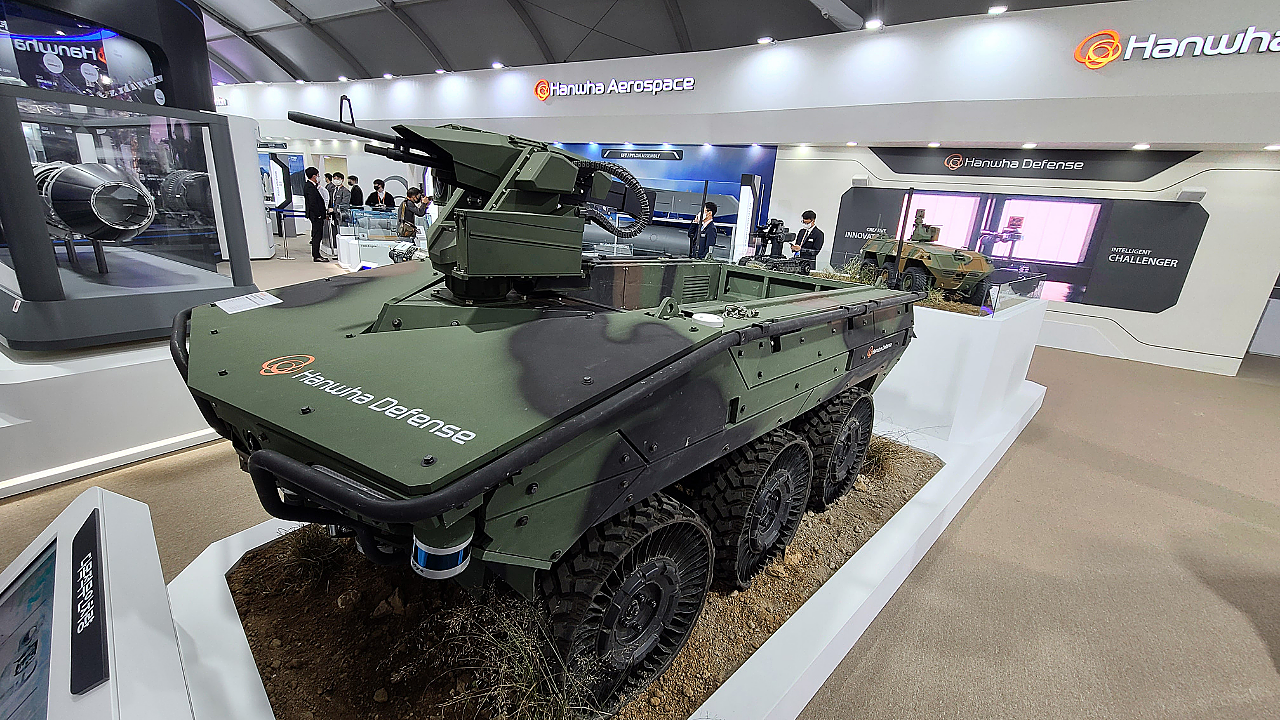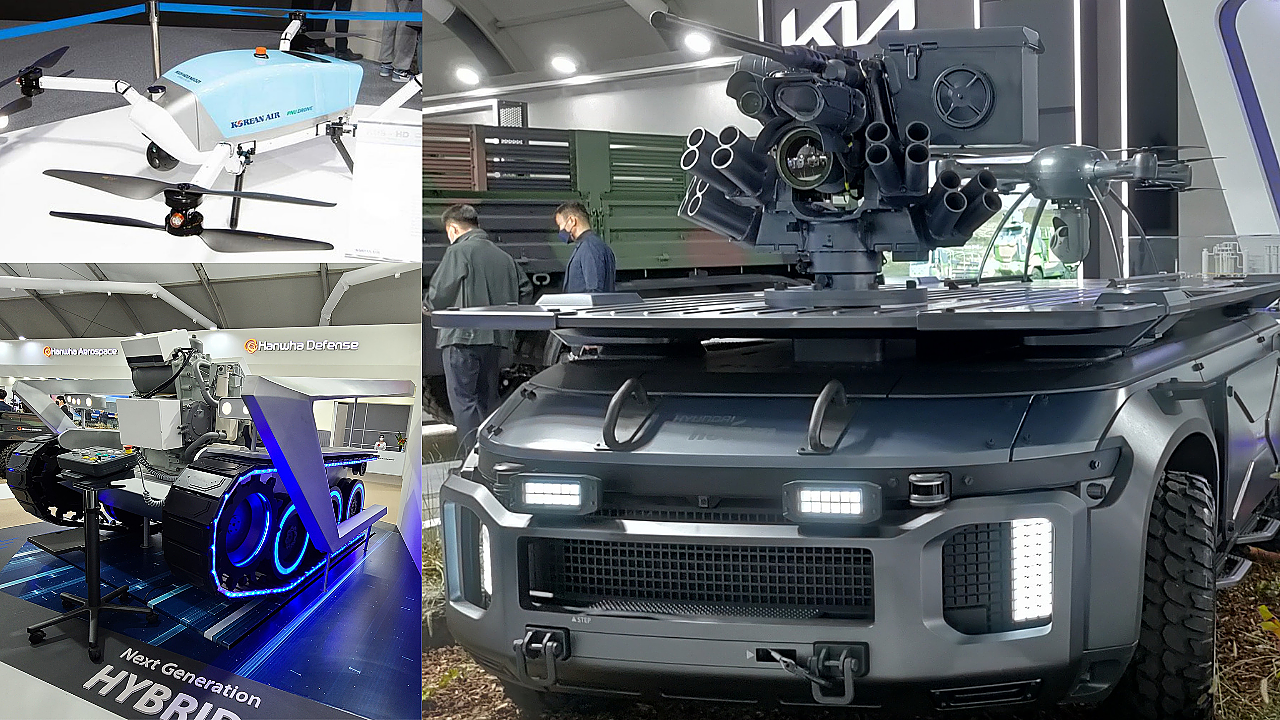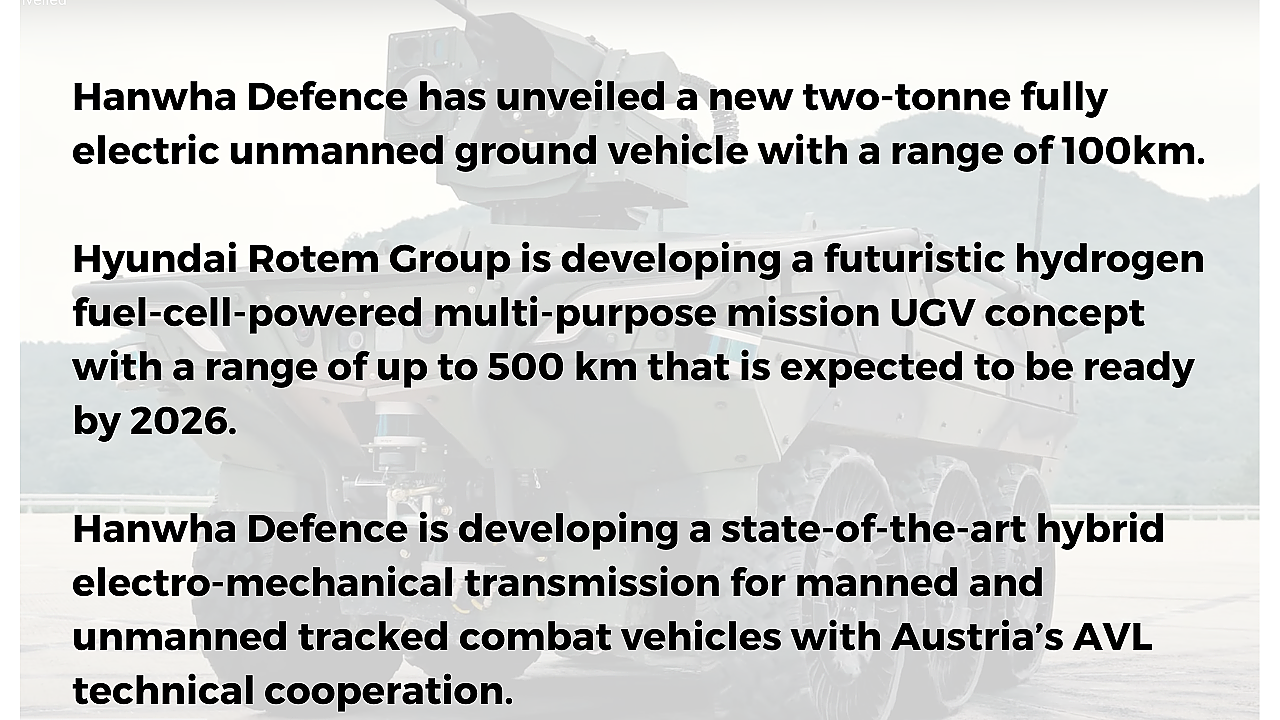
The recently concluded Seoul International Aerospace and Development Exhibition (ADEX) showcased the growing capability of South Korea’s defence industry with an increasing thrust towards the development of autonomous and unmanned systems for use on-air (Unmanned Aerial Vehicles/Systems – UAS/UAV, land (Unmanned Ground Vehicles – (UGV) and sea (Unmanned Surface Vehicles (USV).
While many in India are more familiar with South Korean heavyweights in the commercial domain such as Samsung, Hyundai and Kia, the nation has a thriving defence industry, with companies such as Korea Aerospace Industries (KAI), Hanwha Defence, LIGNex1 and Hyundai Heavy Industries (HHI) now competing with the best in the business.
Intelligent Ground Vehicles
Hanwha Defence, a leading wheeled and tracked combat vehicle manufacturer, has developed a new 6x6 UGV with a payload capacity of over 500 kg. Named the Intelligent UGV or I-UGV, the fully electric two-tonne vehicle is touted by Hanwha Defence as a major advance over existing 4x4 multi-purpose UGVs and other UGVs built in South Korea. The I-UGV, with a range of 100km and a top speed of 40km/h on paved roads and 20km/h on unpaved roads, is currently undergoing trials with an infantry unit of the Republic of Korea Army. This new class of UGV will be used for troop and cargo transport along with surveillance and reconnaissance missions and can also be equipped with a high-end remote-controlled weapon station that can lock on to targets automatically using acoustic sensors to determine the source of gunfire during the confusion of combat.

The Hyundai Rotem Group displayed a futuristic hydrogen fuel-cell-powered multi-purpose mission UGV concept at the show. This vehicle which is being developed to have a range of up to 500 km, will be capable of both remote and autonomous driving and have independent front and rear steering. Development commenced in 2019, it is slated for completion by 2026. South Korea is heavily promoting hydrogen technology, and Hyundai announced in July that it would supply ten hydrogen buses as part of a pilot programme to the nation’s Ministry of Defence next year.
Hybrid EMT tech
Tracked vehicles provide militaries with unmatched mobility over various terrains, and Hanwha Defence showcased its state-of-the-art hybrid electro-mechanical transmission (EMT) for manned and unmanned tracked combat vehicles at ADEX 2021. Stating that hybrid-electric powertrains are a key requirement for future combat vehicles, Jeff Sung, spokesman for Hanwha Defence, told Mobility Outlook that “Ensuring a stable power supply, electrified vehicles are to provide ample benefits in the battlefields such as silent mobility to escape enemy detection, increased fuel efficiency, and flexible functional modes.”
The Korean firm is developing the hybrid EMT system as part of a South Korean government project and will develop core technologies by 2025. Subsequent development of the EMT system is expected to be completed over the next five years, in technical cooperation with Austria’s AVL, which will undertake development, simulation and testing of the powertrain systems.
According to Hanwha Defence, the hybrid EMT solution is expected to be ready for use on different South Korean tracked combat vehicles by the mid-2030s. This will include a 25-tonne unmanned combat vehicle and a next-generation tracked infantry fighting vehicle.

Hanwha Defence will also be familiar to Indians as the company’s 155mm/52-calibre K9 Thunder Self Propelled Gun has been ordered by the Indian Army and is produced in India in partnership with Larsen & Toubro. Nearly 1,700 K9 variants are in service with seven nations, including South Korea, Turkey, Poland, Finland, Norway, India, Estonia. Hanwha Defence has produced and delivered over 8,500 cutting-edge combat vehicles to customers worldwide to date.
Aerial Drones
KAI, South Korea’s leading aerospace company unveiled a new Urban Air Mobility (UAM) electric VTOL (e-VTOL) platform at the show that will be available in two variants – cargo and passenger. The cargo variant will be able to carry a payload of 600kg, while the five-seater passenger will have a range of 100km and attain a maximum speed of 250km/h. Korean Air showcased its Korean Air UAV System VTOL, which is currently under development for use with the ROK Army and Marine Corps. The KUS-VS is to be used for artillery spotting, tactical surveillance and reconnaissance and will have a range of 80km with an endurance of five hours. According to Korean Air, a single system would comprise four UAVs, a ground control system, and a ground support system. The company is also developing larger and more sophisticated UAVs with plans in the future to incorporate hydrogen fuel cell technology.